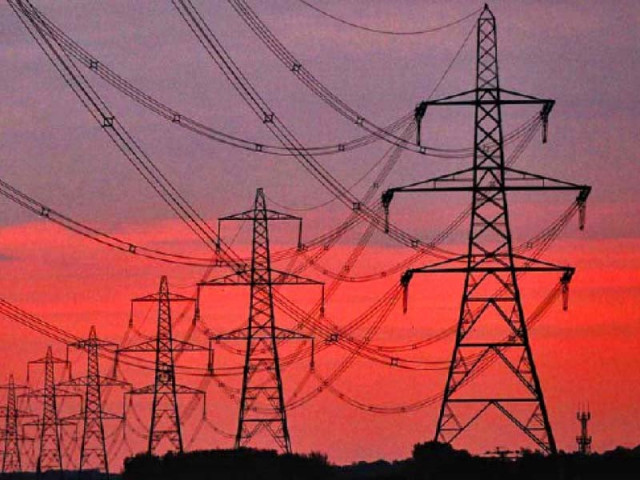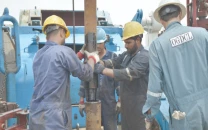Few quick fixes for energy woes
Measures can be taken to reduce gas prices instead of increasing them

We are again hearing about plans for another increase of 37% in gas prices. This article is a humble attempt at suggesting measures which can, instead, help in reducing prices.
Our energy journey, with a few exceptions, is a textbook case for others of what to avoid. For instance, despite an extensive hydel potential of 60,000 megawatts, our energy mix remained mostly tilted towards oil and gas.
Even while the energy requirement continues to grow, we are already through with the peak production of 94,000 barrels per day (bpd) of oil and 4.3 billion cubic feet per day (bcfd) of gas.
They are now at 75,000 bpd and 3.4 bcfd respectively. This is resulting in imports of 80% of oil and 30% of gas requirement.
What is of concern is that with decreasing production, the exploration activity also appears on the wane, although hardly 35% of the country has so far been explored. India drilled 647 wells in FY20 alone while we drilled only 50 in FY21.
In view of the above, the supply-demand gap continues to widen, which in conjunction with the factors discussed below keeps on pushing at the pricing margins. As to the uphill journey ahead, while our per capita electricity consumption is 529 KWh, India and China are respectively 2 and 9 times ahead.
Also our gas imports are projected to grow up to 4 bcfd by 2026. With the resultant energy imports, any major spike in the international energy prices can cause a serious crisis of balance of payments, especially when the economy lacks the required sophistication and depth to, correspondingly, ramp up exports and bridge the gap.
The situation becomes more alarming when analysed in the backdrop of our continued failure in replacement of natural gas and oil reserves, exodus of foreign E&P companies, ad hocism and deficient commercial and operational agility.
Major challenges
Based upon the above, our main energy challenges can be identified as follows:
One, known oil and gas basins stand exhausted and new ones need to be discovered. However, the required professional capacity for that seems missing due to the exodus of MNCs and associated factors.
Two, sluggish exploration activity.
Three, lack of capacity to manage. A major exhibit is not only the failure in augmenting the indigenous gas production, but effectively managing its imports as well. This, primarily, requires management of only the spot purchases of LNG (30% of the total).
How would the system respond when imports would be higher, projected to be 4 bcfd by 2026?
Four, though we have continued dabbling with the idea for the past 20 years, we do not maintain any strategic underground storages of oil and gas. India already has such storages (37 million barrels), which it is now augmenting.
READ Govt shuns plans to renegotiate $15b energy projects
Five, in the post-Taliban takeover in Afghanistan, I was expecting TAPI to be all over the media. But it’s not – indeed a sad reflection of our awareness of our interests.
Topping all the above challenges is the absence of any professional tier/board or committee steering the energy sector. It is rather governed by officials having hardly any subject knowledge and no corporate management experience.
Thus, though, we generally criticise flawed policies, the real culprit is the lack of capacity to execute. A few glaring examples are failure of the unbundling of power supply chain, an absurd energy mix, failure to realise any of the projects valuing at $14 billion in which Russia has been offering collaboration/support since 2012, and Tuwairqui Steel Mill lying idle for the last eight years over relatively trivial reservations about its gas price.
Conversely, commissioning of the mill can annually save around $1 billion in import substitution in addition to several other benefits.
Another example is routine extended delays in national projects, ill-considered investments and high costs of projects due to capacity gaps or sheer apathy.
What is to be done?
A comprehensive “Tabdeeli”, with the following measures, is the answer to all of our energy woes:
One, to benchmark the current status third-party performance audits and capacity mapping of any three large energy PSEs.
Two, an advisory committee of 15 world-class energy professionals, who have successfully managed large value chains, needs to be constituted.
This committee should be responsible for selecting the board of directors and CEOs of energy PSEs, annual performance assessment of the PSEs, attracting/ strategising FDI and guiding sector’s development.
Three, the ministry may focus on policymaking and other regulatory functions as per the highly successful Norwegian model.
Four, proactive pursuance of optimal development of the already discovered hydrocarbon assets, with due guidance, can ramp up the country’s gas and oil production by 10% each.
Five, work streams of senior experts on exploration, field development and foreign direct investment (FDI) may be constituted by the above committee to aggressively search for hydrocarbons and pursue their earliest monetisation.
Six, a Special Purpose Vehicle may be set up for realising the plan of strategic oil and gas storages.
Seven, as to the FDI, the above committee may be tasked to expeditiously conclude the required discussions with Russian companies and propose action plans for approval.
Eight, continuing to provide piped natural gas to every household is simply unsustainable with depleting reserves, increasing population and escalating prices. Alternative, economical solutions are the answer.
This would also help in reducing the current fiscal drain of Rs50 billion per year in lieu of unaccounted-for-gas (UFG) losses.
Therefore, bio-methane (potential: 1,000 million cubic feet per day - mmcfd) projects may be launched for absorbing domestic and CNG load. It would require medium-sized, low-cost, fast-track, off-grid projects, preferably based on modular plants. This would reduce energy imports and prices.
Nine, indigenous coal can be processed and mixed with imported coal to reduce cost. India is already on an aggressive drive in this direction. Similarly, Pakistan is consuming 800 mmcfd of natural gas for fertiliser production, therefore, switching to coal-based fertiliser can be another source of reducing costs and prices.
Ten, to add another revenue stream to their portfolio, SNGPL and SSGC may steer towards diversification through possible synergies (execution, operation and maintenance, project management, etc) of other projects/ ventures in Pakistan and abroad.
I firmly believe that the above suggestions have all the potential to radically reduce gas prices and give a boost to the economy. Of course, the route to their successful implementation, especially in this era of knowledge economies, only leads through the path of meritocracy and professionalisation of the entire decision-making and execution ladder of the energy sector.
The writer is a petroleum engineer and an oil and gas management professional
Published in The Express Tribune, September 27th, 2021.
Like Business on Facebook, follow @TribuneBiz on Twitter to stay informed and join in the conversation.



















COMMENTS
Comments are moderated and generally will be posted if they are on-topic and not abusive.
For more information, please see our Comments FAQ